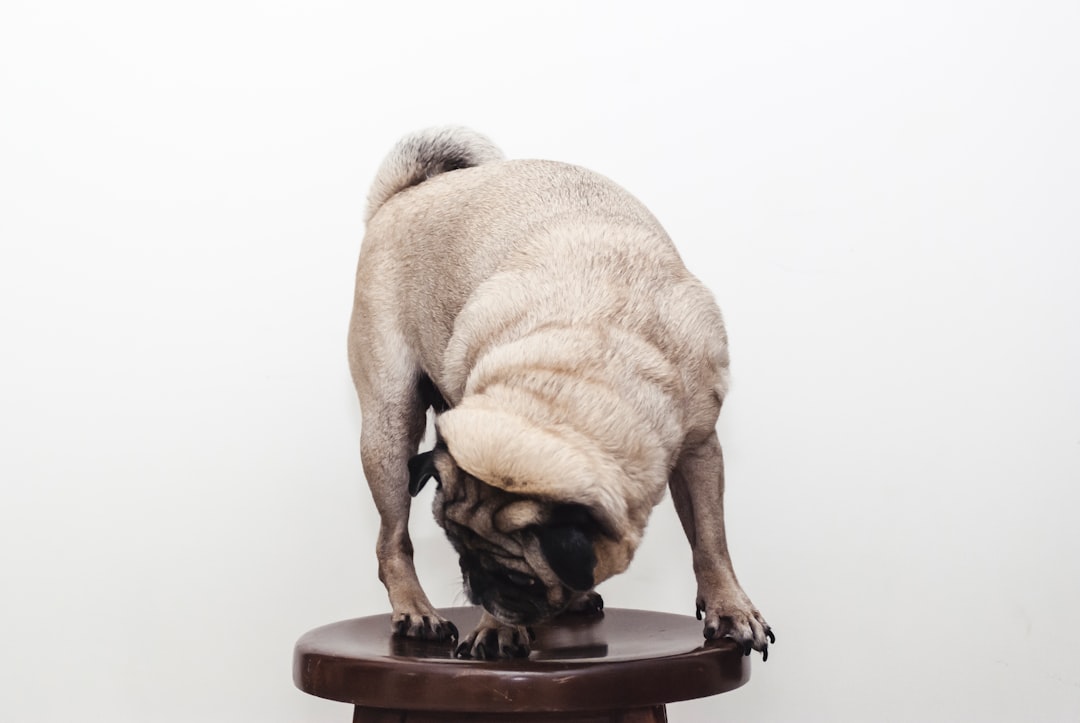Doberman ear cropping is a topic that raises many questions among prospective owners. While some consider it to enhance the breed’s appearance or deter potential threats, it’s crucial to understand the associated risks and responsibilities. From knowing the procedure and necessary post-operative care to weighing legal and ethical considerations, each aspect plays a vital role in this decision-making process. Additionally, alternatives exist for those hesitant about the practice. This guide will help you navigate the complexities of Doberman ear cropping, ensuring that you make informed choices for your beloved pet.
Understanding Doberman Ear Cropping
Doberman ear cropping is a surgical procedure that alters the natural shape of a Doberman’s ears. Traditionally, this practice aimed to enhance the breed’s aesthetic appeal and functionality.
Key Points to Consider:
- Procedure Overview: During ear cropping, a veterinarian removes a portion of the ear. The remaining edges are then shaped and often taped to stand upright.
- Historical Context: This practice dates back to the breed’s origins when it served military and guard roles, allowing for better hearing and protection.
- Aesthetic Appeal: Many owners believe cropped ears give Dobermans a more alert and intimidating appearance.
Pros and Cons of Ear Cropping:
| Pros | Cons |
|---|---|
| Enhanced appearance | Pain and distress to the dog |
| Improved ear hygiene | Risk of complications and infection |
| Breed standard preference | Ethical concerns regarding surgery |
Ultimately, understanding Doberman ear cropping is essential for owners to make informed decisions regarding their dog’s health and appearance.

Reasons for Ear Cropping in Dobermans
Doberman Ear Cropping serves several purposes, deeply rooted in tradition and breed standards. Understanding these reasons can aid owners in making informed decisions. Here are the primary motivations behind ear cropping:
Aesthetics: Many owners believe cropped ears enhance the Doberman’s regal appearance, emphasizing their strong, athletic build.
Breed Standard: Various kennel clubs, particularly in the United States, recognize Doberman Ear Cropping as part of the breed’s standard, impacting show eligibility.
Perceived Health Benefits: Some argue that cropping reduces the risk of ear infections by promoting air circulation and preventing moisture buildup, although this remains debated.
Defense Mechanism: Historically, Dobermans served as guard dogs. Cropped ears often provide a more intimidating appearance, which some owners feel contributes to a more formidable presence.
Traditional Practices: Ear cropping has been a long-standing custom in many breeds, passed down through generations of breeders, shaping the cultural attitudes surrounding the practice.
In conclusion, Doberman Ear Cropping encompasses a complex mix of aesthetic, practical, and cultural factors that every potential owner should consider.
The Ear Cropping Procedure: What to Expect
When considering Doberman ear cropping, it’s essential to understand the procedure involved. Here’s a concise breakdown of what to expect:
Consultation: Schedule a consultation with a qualified veterinarian. They will assess your Doberman’s health and discuss the benefits and risks of ear cropping.
Anesthesia: The procedure usually requires general anesthesia. Your vet will explain the anesthesia process and ensure your dog is safe during the surgery.
Surgery: The actual ear cropping lasts about 30–60 minutes. The vet will remove a portion of the ear while shaping it for an upright appearance. Different styles and cuts exist; your vet can guide you based on breed standards.
Post-Procedure Monitoring: After surgery, your Doberman will need to be monitored as they wake up from anesthesia. Expect some grogginess, which is normal.
Recovery: Your vet will provide specific aftercare instructions. Typically, it may take 8–12 weeks for the ears to heal completely.
Overall, understanding the Doberman ear cropping process will help you prepare for this decision with more confidence.
Post-Operative Care for Cropped Ears
After the Doberman ear cropping procedure, ensuring proper post-operative care is crucial for a smooth recovery. Follow these essential care tips:
- Keep Ears Clean: Gently clean the ears with a vet-recommended solution to prevent infection.
- Limit Activity: Restrict vigorous activities such as jumping or running for several weeks to allow proper healing.
- Monitor for Signs of Infection: Watch for redness, swelling, or discharge from the ears. Any unusual signs warrant a vet visit.
- Use a Cones or E-Collars: Prevent your dog from touching or scratching their ears by using cones or e-collars.
Important Considerations
- Attend Follow-Up Appointments: Schedule and attend follow-up visits with your veterinarian to check the healing process.
- Be Patient: The full healing process can take several months; avoid rushing the recovery.
- Pain Management: Administer prescribed pain medication as advised by your vet to keep your Doberman comfortable.
By prioritizing post-operative care for Doberman ear cropping, you can help ensure that your pet heals well and remains healthy.

Legal Considerations Surrounding Ear Cropping
Doberman ear cropping raises important legal questions that every pet owner should consider. Laws regarding this practice vary significantly across different regions, making it crucial for owners to be well-informed.
Key Points to Consider:
Legislation Differences: Some countries or states ban ear cropping altogether, while others allow it under specific conditions. Always check local regulations before proceeding.
Veterinary Licensing: Ensure that your veterinarian is certified and permitted to perform ear cropping in your area. Unauthorized procedures might not only be unethical but also illegal.
Animal Welfare Laws: Many jurisdictions have strict animal welfare laws that mandate any surgical procedure to be performed with appropriate anesthesia and post-operative care.
Potential Penalties: Non-compliance with local laws can result in fines or criminal charges, emphasizing the importance of understanding your responsibilities as a pet owner.
In conclusion, before making a decision about Doberman ear cropping, thoroughly investigate the legal landscape to ensure you are making a responsible and lawful choice for your furry friend.
Ethical Perspectives on Ear Cropping
Doberman ear cropping has stirred considerable debate among pet owners, breeders, and animal welfare advocates. Here are some key ethical perspectives to consider:
Animal Welfare Concerns: Opponents argue that Doberman ear cropping is unnecessary and can cause undue pain and distress to the dog. They contend that the procedure is purely cosmetic and does not enhance the dog’s welfare or abilities.
Cultural Context: For many, ear cropping is a traditional practice, deeply rooted in the history of the breed. Supporters believe it preserves breed standards and contributes to the breed’s identity.
Veterinary Ethics: Many veterinarians refuse to perform ear cropping unless it serves a medical purpose. They emphasize the importance of addressing pain management and proper care post-surgery.
Legislation and Regulation: As more countries and states implement bans on cosmetic surgeries for dogs, ethical questions arise about the rights of owners versus the rights of animals.
Ultimately, owners must weigh these ethical considerations seriously when contemplating Doberman ear cropping. Engaging in open discussions and researching the implications can lead to a more informed decision.
Alternatives to Ear Cropping for Doberman Owners
While Doberman ear cropping is a traditional practice, many owners seek alternatives. Fortunately, there are several strategies to consider that can promote your Doberman’s natural appearance and wellbeing:
Natural Ears: The most straightforward alternative is to leave the ears unaltered. Many owners find that Dobermans look dignified with their natural, floppy ears.
Decorative Accessories: Consider using stylish collars or bandanas. Accessories can enhance your dog’s look while maintaining their natural ear shape.
Training: Invest time in training to cultivate your Doberman’s personality and behavior. A well-trained dog often captures attention without the need for cosmetic alterations.
Grooming: Regular grooming can improve your dog’s overall appearance. A well-groomed Doberman, with clean ears, is always appealing.
Socialization: Regular interaction with other dogs can help your Doberman develop temperament and confidence, making their natural ears a non-issue.
By choosing not to engage in Doberman ear cropping, owners can celebrate the natural beauty and personality of their dogs while prioritizing their health and comfort.

Making the Decision: Should You Crop Your Doberman’s Ears?
Deciding whether to proceed with Doberman ear cropping is a significant choice that requires careful consideration of various factors. Here are some key points to weigh:
- Aesthetic Preference: Many owners prefer the traditional look of cropped ears, believing it enhances the breed’s appearance.
- Health Factors: Consult with your veterinarian regarding any potential health benefits or risks associated with ear cropping.
- Emotional Impact: Consider the emotional implications for your pet. Dogs with cropped ears may experience discomfort during recovery.
- Legal Restrictions: Be aware of local laws and regulations regarding Doberman ear cropping. Some jurisdictions have strict prohibition against the procedure.
- Commitment to Care: If choosing to crop, remember that post-operative care is crucial to ensure proper healing.
Ultimately, the choice should align with your values and your dog’s well-being. Engaging in open conversations with breeders, veterinarians, and fellow owners can help in making an informed decision.
Frequently Asked Questions
What is ear cropping and why do Doberman owners consider it?
Ear cropping is a surgical procedure wherein a portion of a dog’s ear is removed to achieve a specific look. Doberman owners often consider ear cropping to adhere to breed standards, enhance their pet’s appearance, and contribute to perceived protection abilities. Some believe that it may reduce the risk of ear infections by allowing better ventilation, although there’s no definitive evidence supporting this claim. However, it’s important to note that this practice is controversial and varies in legality across regions.
Is ear cropping painful for Dobermans?
Ear cropping is a surgical procedure that does involve some level of pain and discomfort for the dog. The procedure is typically performed under anesthesia, but the recovery phase can include pain as the ears heal. Owners should be prepared to manage their Doberman’s post-operative care, which may involve administering pain relief medications, following specific aftercare instructions, and ensuring the dog avoids any activities that could jeopardize the healing process.
Are there any ethical concerns surrounding ear cropping for Dobermans?
Yes, there are significant ethical concerns regarding ear cropping, as many animal welfare organizations consider it an unnecessary cosmetic surgery. Critics argue that it inflicts pain and suffering on the animal for aesthetic purposes, which doesn’t contribute to the dog’s health or welfare. As a responsible pet owner, it’s essential to weigh the cosmetic benefits against the potential pain and ethical implications, and consider alternative ways to celebrate your Doberman’s natural beauty.
What should I consider before deciding to crop my Doberman’s ears?
Before deciding to crop your Doberman’s ears, consider several factors: the legality of the procedure in your location, the potential health risks and discomfort your dog may face, the long-term commitment to post-surgery care, and the ethical implications surrounding this practice. Additionally, it’s important to evaluate your own motivations—whether they stem from aesthetic desires or genuine concerns for your dog’s health. Consulting with a reputable veterinarian and discussing the pros and cons is crucial for making an informed decision.



